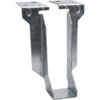Thanks woody, same scenario as always. I can't get hold of the structural engineer despite emailing him yesterday and leaving him voicemails on his phone.
Another question, as the footings are filling up with water when we have rain, if we get a dry day and they are a little damp could the builders add some accelerator or waterproofer into the first few courses of blocks to get them past the dpc? It's literally one and a half blocks a course. The weather still looks rubbish and if they can get a window of good weather to get the blocks laid and set before the rains come again I'd like to go for it. Thoughts?
Another question, as the footings are filling up with water when we have rain, if we get a dry day and they are a little damp could the builders add some accelerator or waterproofer into the first few courses of blocks to get them past the dpc? It's literally one and a half blocks a course. The weather still looks rubbish and if they can get a window of good weather to get the blocks laid and set before the rains come again I'd like to go for it. Thoughts?


